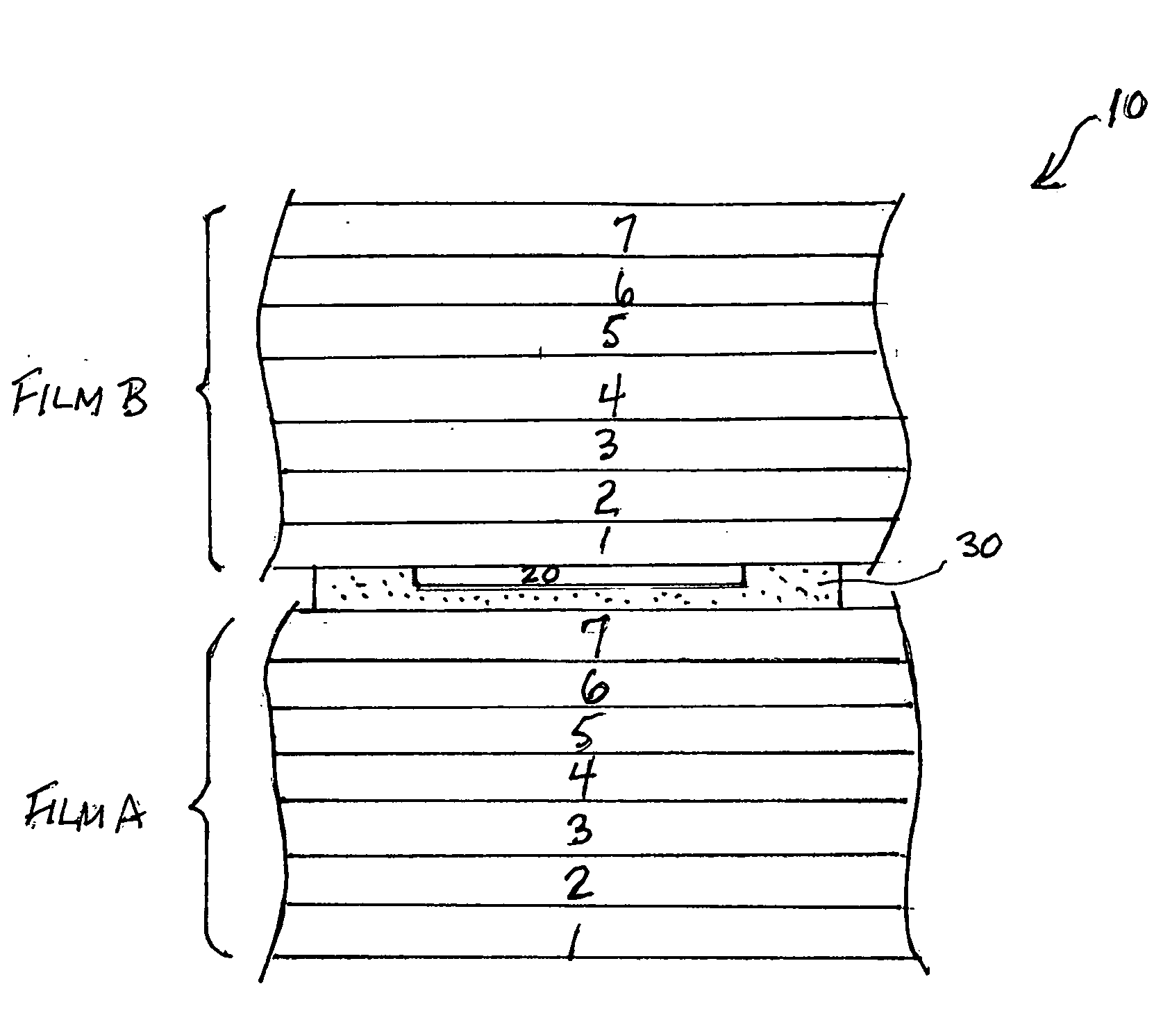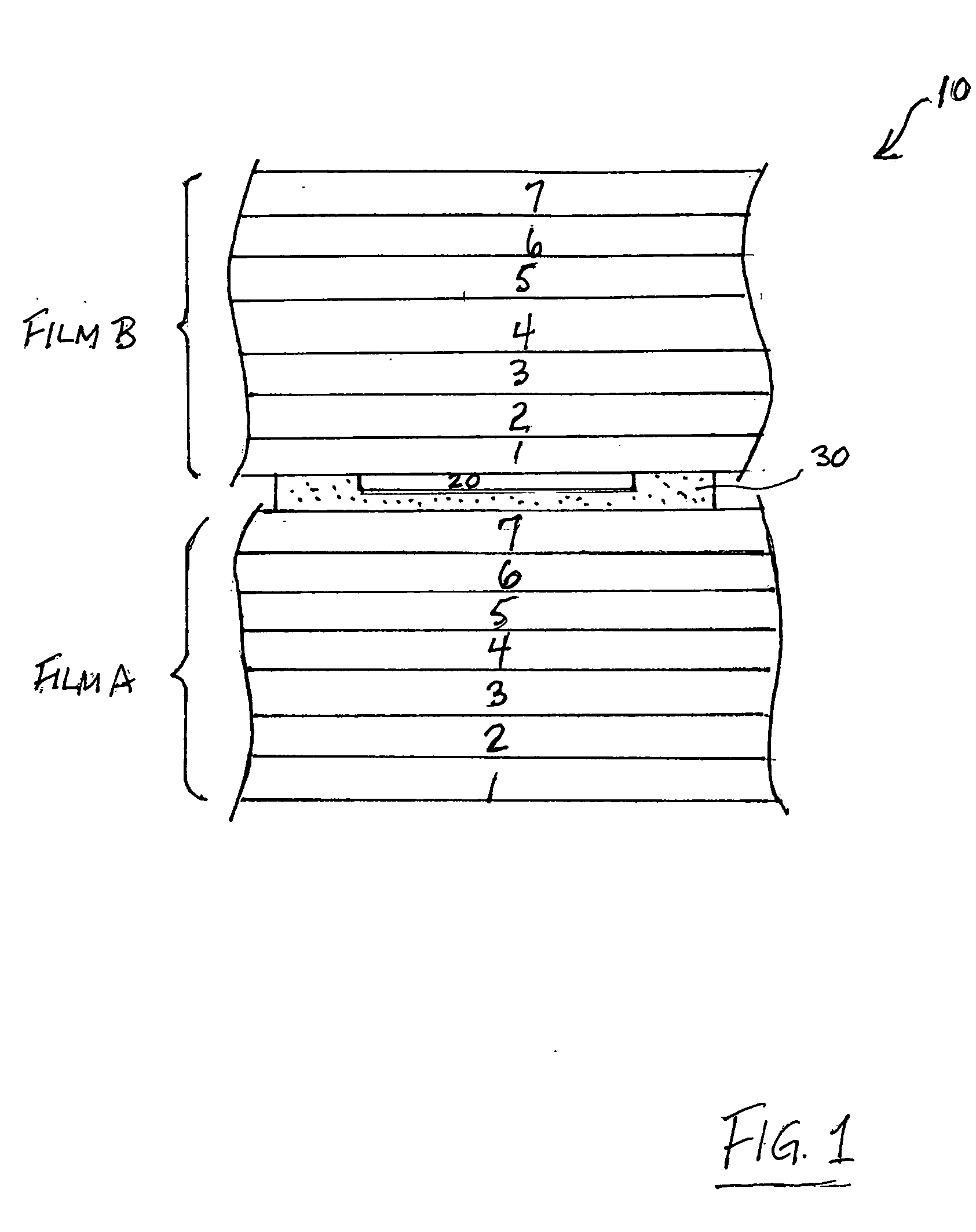Printed sterilizable laminate for aseptic packaging
a technology of aseptic packaging and laminate, applied in the direction of packaging foodstuffs, packaging goods types, food shaping, etc., can solve the problems of less stable dimensional stability of films, less desirable or unsuitable films for this end-use application, and relatively expensive means of packaging materials
- Summary
- Abstract
- Description
- Claims
- Application Information
AI Technical Summary
Problems solved by technology
Method used
Image
Examples
examples
[0082
[0083]Several film structures in accordance with the invention are identified below. Materials are as follows.
TABLE 1Resin IdentificationMaterialTradename OrMeltingCodeDesignationSource(s)PointaAB1502835 ™Ampacet135° C.PE1ELITE ™ 5400 GDow123° C.PE2DOW ™ 2045.04Dow122° C.PE3662I ™Dow108° C.PE4T50-200-178 ™Ineos132° C.PE5ELITE ™ 5500 GDow121° C.AD1PX3236 ™Equistar125° C.AD2PX3410 ™Equistar124° C.PA1ULTRAMID ™ B40LN01BASF220° C.OB1EVAL ™ L171BEvalca191° C.OB2SOARNOL ™ AT4403Nippon Gohsei164° C.EN1TOPAS 8007 F-04 ™Ticona—aMelting Point of resin or masterbatch (by differential scanning calorimetry)
[0084]AB1 is a masterbatch having about 80%, by weight of the masterbatch, of FORTIFLEX™ T60-500-119, a high density polyethylene with a density of 0.961 grams / cc; about 16%, by weight of the masterbatch, of SILTON JC30A™, a sodium calcium aluminum silicate, NaCaAl(Si2O7); and about 4 w %, by weight of the masterbatch, of CLEAR Block80™ talc, an antiblocking agent.
[0085]PE1 is an IPN resi...
PUM
| Property | Measurement | Unit |
|---|---|---|
| Fraction | aaaaa | aaaaa |
| Thickness | aaaaa | aaaaa |
| Thickness | aaaaa | aaaaa |
Abstract
Description
Claims
Application Information
 Login to View More
Login to View More - R&D
- Intellectual Property
- Life Sciences
- Materials
- Tech Scout
- Unparalleled Data Quality
- Higher Quality Content
- 60% Fewer Hallucinations
Browse by: Latest US Patents, China's latest patents, Technical Efficacy Thesaurus, Application Domain, Technology Topic, Popular Technical Reports.
© 2025 PatSnap. All rights reserved.Legal|Privacy policy|Modern Slavery Act Transparency Statement|Sitemap|About US| Contact US: help@patsnap.com


